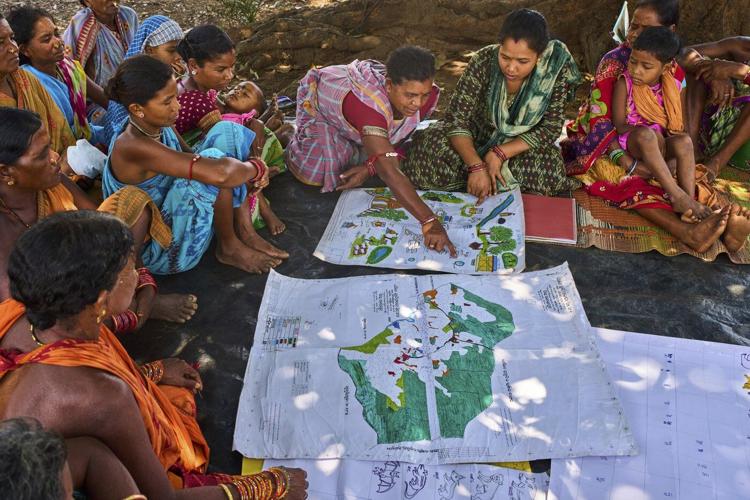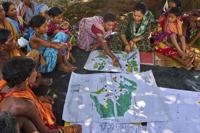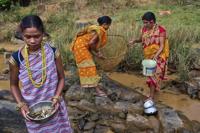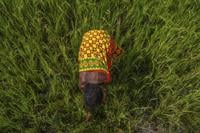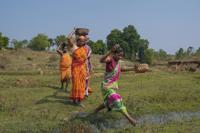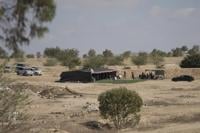KORAPUT, India (AP) — At a small stream in India's eastern state of Odisha, Indigenous villagers catch eels and fish for a dinner celebrating an annual harvest festival. The bounty of communal farming, foraging and fishing marks the start of a new season.
But the fish and other resources have been dwindling.
“Nowadays, the rains come late, affecting our farming, leading to a decrease in production,” said Sunita Muduli, a Paraja tribeswoman from Putpondi village. She stood on freshly tilled fields that would be sown again with millet before the increasingly .
The Indigenous Adivasis have lived in these villages for millennia. They continue traditional practices of farming millet and rice and foraging leaves and fruit from the forest to make plates, the local brew and more.
With those practices under pressure from a , they are making their most significant effort yet to speak up for their community's needs, advocating for Indian authorities to protect and restore their lands as the nation of more than 1.4 billion people tries to adapt to a
Women are leading the way. Muduli and others from 10 villages, with help from a local nongovernmental organization, have surveyed and mapped out resources that are dwindling and what needs restoring.
Comparing state government data from the 1960s with their results, they found that common areas in many of their villages had shrunk by up to 25%.
The women have created what are known as dream maps, showing their villages in their ideal states. The most prominent of their bright colors is green.
Muduli and others plan to submit their maps and surveys to local government officials, the first step in requesting village development funds to preserve or restore their common areas. The women estimate that $2 million might be needed — an ambitious ask when India's poorer regions often struggle to secure and implement government projects.
Still, the women believe they have a 50-50 chance of success.
“We want to make sure these resources are available for our children,” Muduli said.
This is the first time that many of the women are formally leading an outward-facing community effort. They say it's giving them more confidence in speaking up about community needs.
“Our forest contains an abundance of diverse resources. Unfortunately, rainfall has reduced, temperatures have risen and our forest cover has dwindled. However, once we acquire the rights we deserve, our priority will be to revitalize and flourish our forest," said Saita Dhangada Majhi of Pangan Pani village.
They seek rights over their common lands that will require outsiders, including authorities, to seek villagers' permission to make any changes to them.
India is among the world's most vulnerable countries to climate impacts. According to the 2025 Climate Risk Index, the country between 1993 and 2022 was subject to 400 extreme events — including , and cyclones — causing 80,000 deaths and economic losses nearing $180 billion.
Odisha is one of India's poorest states and among the most vulnerable to climate impacts. A study by researchers from Odisha's Fakir Mohan University published in 2023 found that food production there had decreased by 40% in the last 50 years due to climate change.
Most Indian farmers rely on rain-fed agriculture, with about half of all farmed land dependent on downpours. As the monsoons become more unpredictable, livelihoods are affected.
India's Indigenous people feel those impacts the most as their traditions depend greatly on forests and natural produce, said Bidyut Bidyut Mohanty of the Odisha-based nonprofit Society for Promotion of Rural Education and Development. The organization helped the Odisha villages with the dream mapping process.
Climate change is affecting “their very existence,” Mohanty said, asserting that they have not contributed to the problem but are paying the price.
The forest commons are “not only considered the lungs but are also a hidden kitchen for Indigenous communities,” he said.
The women's survey found that resources available a decade earlier had either dwindled or disappeared. In Muduli's village, the number of fruits such as mango, guava, java plum and Indian gooseberry had dropped drastically. Resources used to make traditional instruments and other items had become more rare.
Climate experts said the Odisha project can be a model to be replicated across India and other nations. United Nations reports have said lies in regions controlled by Indigenous peoples.
Women from marginalized and vulnerable communities are affected the most by climate change, and the Indigenous women of Odisha are an inspiration, said Neha Saigal, a gender and climate expert at Bengaluru-based Asar Social Impact Advisors who is familiar with the mapping project.
“They are actually leading from the front,” she said.
Their work could be critical in deciding where India’s efforts on climate change should be focused, Saigal added, noting that the country is working on a national adaptation plan.
It is not clear whether the dream maps will become part of that plan. The women behind them say their project has given them formal understanding of what they and their communities have long known intuitively.
They want to pass that on for generations to come.
“Forest is our life," said Purnima Sisa of Badakichab village. "We have taken birth in this forest, and one day we will die in the forest. It is our life and livelihood.”
___
Follow Sibi Arasu on X at
___
The Associated Press’ climate and environmental coverage receives financial support from multiple private foundations. AP is solely responsible for all content. Find AP’s for working with philanthropies, a list of supporters and funded coverage areas at .

